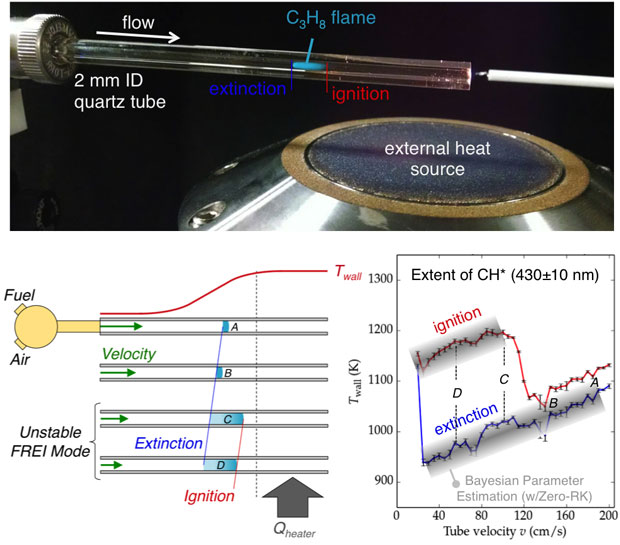Matthew Mcnenly (16-ERD-003)
Project Description
An 85-year gap separates fuel certification and modern automotive engines. The engine configuration used for fuel testing is very far removed from the operating conditions of modern production engines, which use high compression ratios, turbochargers, and direct fuel injection. These standard fuel measurements have even less connection to many proposed clean-engine concepts that use chemistry-controlled combustion such as those being researched under direction of the DOE Vehicle Technology Office. Even worse, these tests typically require at least one liter of fuel. The large test volumes make it infeasible to test many new bio-derived fuels and additives, which are often produced initially in very small batches. We plan to predict new biofuel performance with less than a milliliter sample, which has never been done. Leveraging the advanced computational solvers and high-fidelity chemistry mechanisms developed at LLNL, we will produce a predictive simulation of a small-volume fuel ignition tester (micro-FIT, shown in figure) and develop a theoretical link with simulation between micro-FIT and engine performance in a high-efficiency, chemistry-controlled automotive engine. The success of the project will increase the number of biofuels currently tested for advanced engines by several orders of magnitude. Such throughput will enable the simultaneous optimization of fuels and engines, which, by 2030, is projected to reduce vehicle petroleum consumption by 30% beyond current federal mandates.
We expect to become the first to predict new biofuel performance in an internal-combustion engine with less than a 1-mL sample. By combining experiments with high-fidelity combustion simulations, we will make blind performance predictions with very small volumes of biofuel blends that have never been tested in an internal combustion engine. With engine tests at the Combustion Research Facility at Sandia National Laboratories, we will validate these predictions. The micro-FIT device will eliminate the need to scale biofuel production to the liter scale for screening purposes, thereby increasing the test rate by several orders of magnitude. The advantage of our research approach is that it exploits a large set of time-dependent data to create a robust and quantitative fuel measurement, and is built on chemistry solvers that are one to three orders of magnitude faster than those used by other investigators. The large computational cost associated with simulating real transportation chemistry has limited others to studying steady, one-dimensional models of the micro-FIT device. We expect to create intellectual property for the design and optimization of advanced fuels for current and new combustion systems.
Mission Relevance
The project, which will provide key scientific proof of the efficacy of small-volume fuel testing and serve as a cornerstone for future co-optimization of fuels and engines, supports the Laboratory's energy and climate security strategic focus area. Co-optimization will enable greater energy and climate security by reducing petroleum consumption. Our research methodology in fuel performance simulation and design is relevant to the Laboratory's core competency in high-performance computing, simulation, and data science, and should attract considerable collaboration and interest from the energy sector.
FY16 Accomplishments and Results
In FY16 we (1) created and verified extensions needed to rapidly set up and solve the pre-conditioner matrices of an unsteady flame solver using Lawrence Livermore's Zero-RK (zero-order reaction kinetics software) chemistry solver; (2) identified and completed an initial set of validation experiments using gaseous fuels with a wide range of reactivity, in collaboration with Louisiana State University; (3) validated the unsteady flame solver against the micro-FIT experiment; and (4) computed the chemical reaction rate sensitivity to the measurable micro-FIT quantities.






